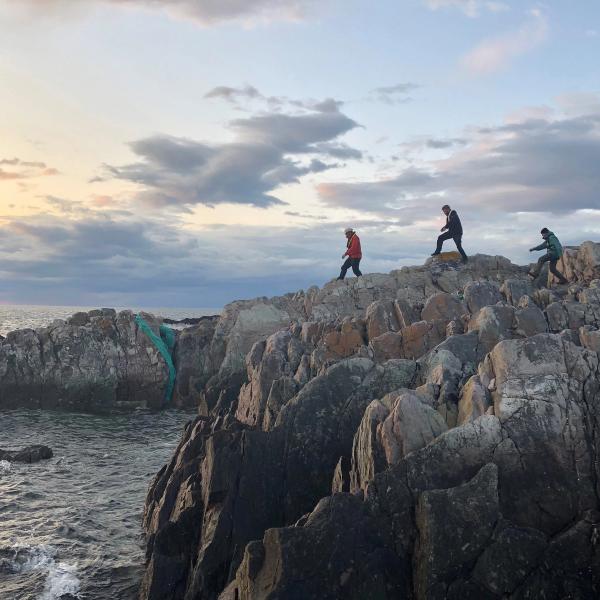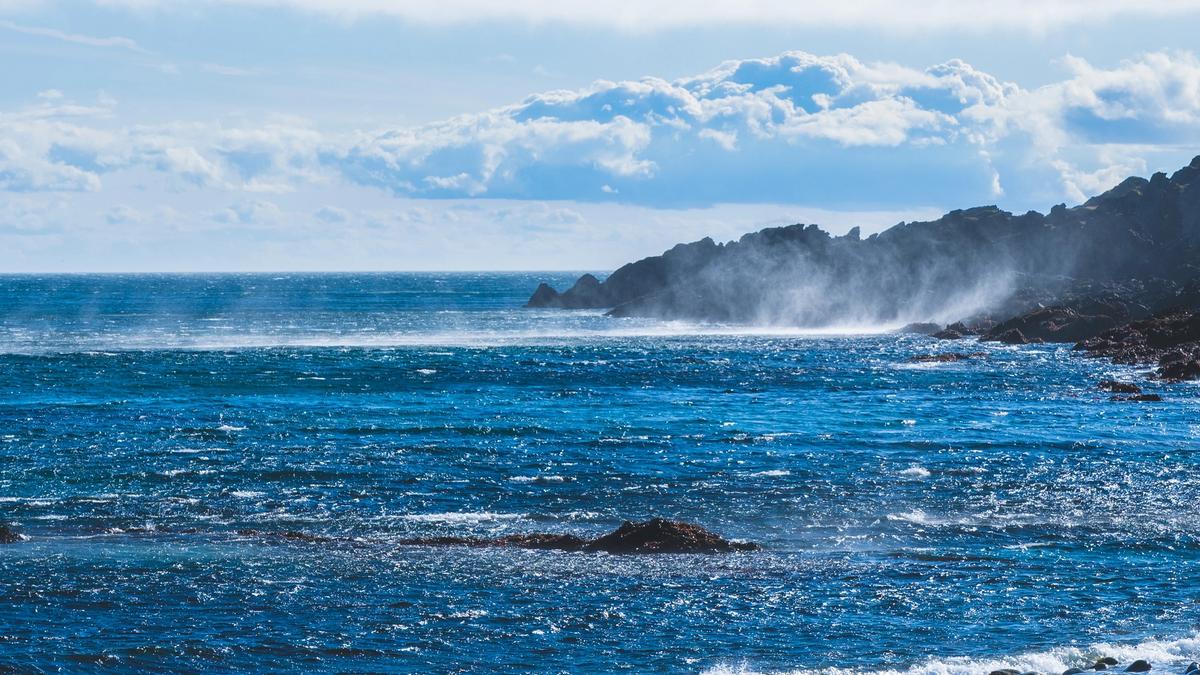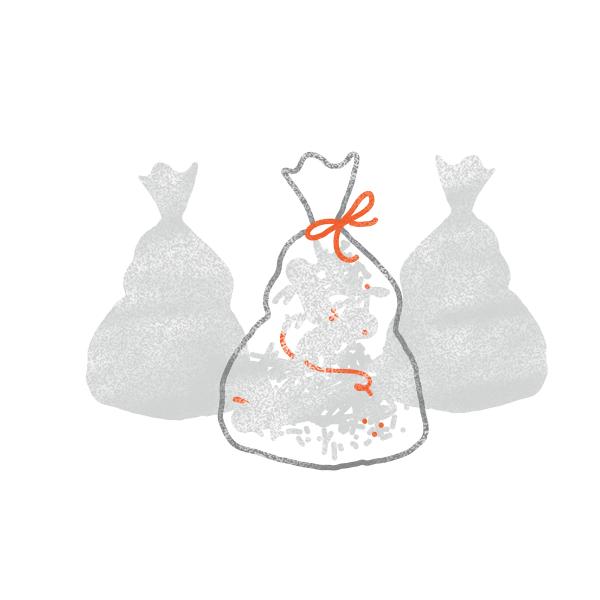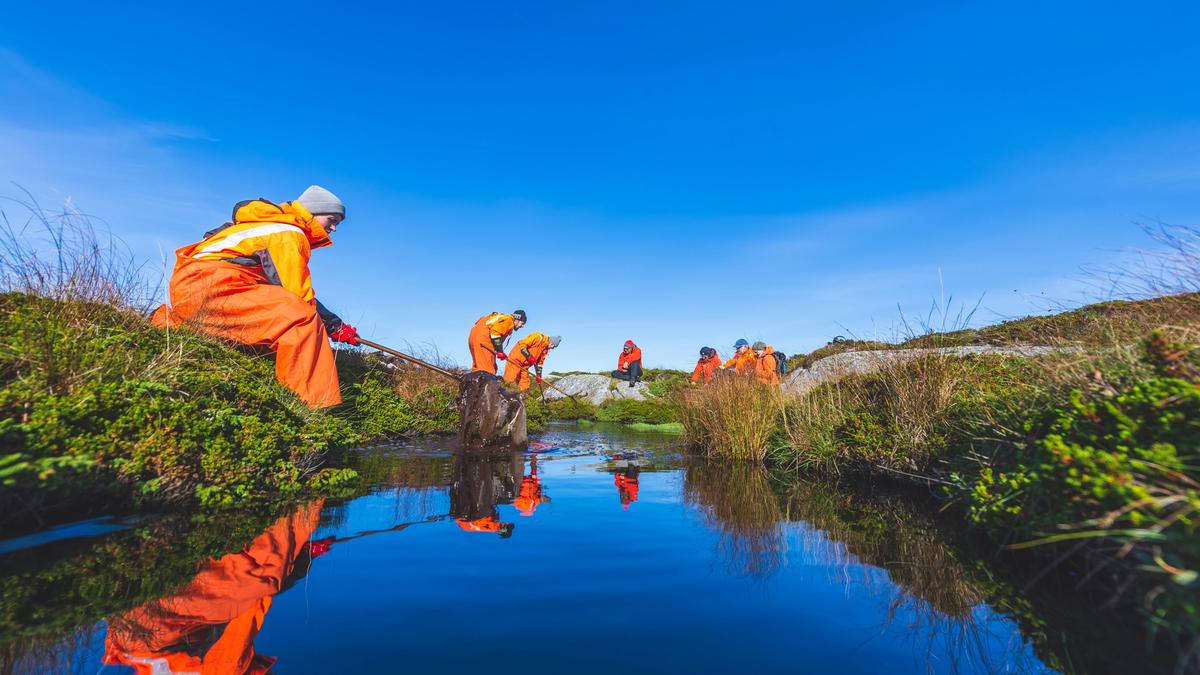Health and safety responsibilities
It is important to take care of the health and safety of everyone participating in beach clean-up operations. The objective is to carry out beach clean-up in a safe way without any injuries to personnel. The risk of injuries depends on where cleaning is performed, what the terrain is like, the weather conditions, the types of waste that are found and who participates in the clean-up activities.
The Norwegian Working Environment Act stipulates requirements for a proper working environment and that emphasis must be placed on the prevention of injuries and illness during planning of work. Following a comprehensive assessment, volunteers may also be considered employees, pursuant to the Norwegian Working Environment Act. Thus, an organiser is responsible for preventing accidents during clean-up operations. The organiser must ensure that clean-up activities are planned, organised, and executed in accordance with the requirements set out in the Norwegian Working Environment Act.
Organisers are responsible for:
- Preventing accidents
- Planning work activities, assessing risk and implementing measures
- Considering the need for and performing the necessary training
- Considering whether working hours ensure that safety is maintained
- Taking special consideration for minors
Participants in a clean-up operation are responsible for:
- Being attentive and careful and take care of your own safety
- Following the instructions provided about clean-up activities
- Wearing appropriate clothing and protective equipment
- Bringing enough food and beverages if this are not provided
Assessing risk

It is important to assess risk in order to take care of health and safety and to prevent accidents during a clean-up operation. Risk assessments must be adapted to the dangers relevant to the clean-up operation in question. The risk is different if it is a case of a school class that will be cleaning a beach in the inner Oslo fjord or experienced cleaners who will clean an inaccessible protected area on the coast of Finnmark. By assessing risk, you gain a conscious understanding of what could happen during your clean-up operation and you will be able to decide which measures you need to implement to maintain the safety of your participants.
Three simple questions form the core of a risk assessment:
- What could go wrong?
- How can we prevent it?
- What can we do to reduce the consequences if it happens?
This article concerns health and safety for personnel, but the risk assessment principles should also be used when assessing other types of risk. For example, to assess whether clean-up activities could disturb animals and birds or damage vegetation, cultural heritage, or properties.

Question 1 - What could go wrong?
The first question is about identifying hazards and assessing which incidents could occur during a clean-up operation. You can use this checklist when assessing what could go wrong. The list is not exhaustive and the hazards and incidents that should be assessed will vary between different clean-up operations. The purpose is to assess all risk factors that are relevant to your clean-up operation.
Risk factors

General conditions:
- Conditions at the clean-up location
- Communication
- Weather, wind, and wave conditions
- Tidal conditions
- The experience of the clean-up personnel
- Stings and bites
- Lack of food and beverages
- First-aid equipment and expertise

Boat transport:
- Transport of personnel at sea
- Are the boats suitable for your use
- Embarkation and disembarkation of boats, at quays, between boats, at the clean-up location, etc.
- Mooring of boats
- The captain’s experience
- Safety equipment on boats

Movement in terrain:
- Movement in challenging terrain
- Fall injuries or sprains
- Individuals could get lost
- Individuals could fall into water

Clean-up:
- Prick and cut injuries
- Strain injuries (from carrying heavy loads or dragging loose objects)
- Crush injuries
- Hypothermia and frostbite
- Handling large and heavy objects
- Handling hazardous waste, e.g., chemicals, waste oil, syringes, ampoules, sharp objects, explosives, and any unknown content
- Acute illness

Transport and handling of waste:
- Proper storage of waste
- Loading and unloading waste to and from boats
- Safe transport of hazardous waste
- Transport of waste by sea
- Transport of waste on land
Question 2 - How can we prevent it?
When you have obtained an overview of what could happen, you need to consider how you can prevent it.
These are general conditions that you should ensure:
- Safe transport of personnel
- Proper organisation of clean-up activities
- Necessary training and information
- Good communication
- Correct handling of hazardous waste
- Appropriate clothing and protective equipment
- Proper storage and transport of waste
Safe transport of personnel
Personnel transport may take place in different ways, by foot, by vehicle, by boat or helicopter. Ensure that all transportation takes place in accordance with applicable requirements and regulations and that the transport provider is familiar with these regulations. The Norwegian Maritime Authority administers regulations that govern traffic at sea and that apply to both commercial boat transport and leisure boats.
The Code of conduct for safe boating (Sjøvettreglene) provide some basic rules for how to travel safely by boat. The International Regulations for Preventing Collisions at Sea apply to anyone who travels by boat and describe the principles for governance and sailing.
Proper organisation of clean-up activities
As an organiser, you should prepare a plan for how the clean-up activities will be organised and executed. During planning, you need to take into account who will participate in the clean-up activities. You must take into account whether the participants are experienced beach cleaners who are used to being in nature handling marine waste, whether they are minors or whether there are any people who have never participated in clean-up operations before.

In rugged or complex terrain, people should work in pairs. Clean-up personnel should wear clothing that is clearly visible or wear high-visibility vests.
There should be a safety officer assigned to each clean-up operation, who will be available in case of incidents. If an accident occurs, the safety officer will have the main responsibility for looking after injured persons, notifying the relevant parties of the accident, and arranging transport for injured persons.
Necessary training and information
It is good practice to provide a briefing about how clean-up activities should be performed prior to the activities commencing. The briefing should include, among other things, information about the clean-up area, what to clean, the time schedule, organisation, the meeting point, waste management, risk factors, precautions to take care of safety and incident reporting.
Good communication
Field work may take place in areas where there is no mobile coverage. The organiser must consider the needs for communication in connection with the operation and what communication equipment will be necessary.
It is good practice to let someone know where you are going when you are participating in clean-up operations. This provides the organiser with the opportunity to keep an overview of where the clean-up personnel are.
Correct handling of hazardous waste
You may find different types of hazardous waste during clean-up operations, which must be handled properly depending on the type of waste. If you are in doubt what you have found and whether it is safe to pick up, keep your distance and leave the object where it is. Register the findings, including a description, the location and preferably a picture of the object and notify the police.
Together with the Norwegian Retailers' Environment Fund , Marfo has created a picture guide that shows different types of dangerous objects that beach cleaners may come across while cleaning up marine waste. Use the picture guide for dangerous objects.
The guide is only available in Norwegian.
Question 3 - What can we do to reduce the consequences if it happens?
Accidents can occur even if the risk has been assessed in advance and measures to reduce the risk have been implemented. You must therefore be prepared to manage incidents and accidents if they occur.
You must consider the following prior to a clean-up operation:
- Accident reporting
- Emergency and first-aid equipment
- First-aid in the event of injuries
- Transport of injured persons
Accident reporting
Serious accidents must be reported to 113. If you have installed the “Hjelp 113” app on your mobile in advance, you will be able to report an accident quickly and efficiently. You can also contact a duty doctor on 116117. Incidents can be reported via VHF channel 16.
If the clean-up operation takes place in areas without mobile coverage, you need to bring appropriate communication equipment. Appropriate communication equipment includes VHF, a satellite phone or inReach GPS transmitter. All clean-up operation participants should be informed of where the communication equipment can be found.
If an accident happens, it is important to inform all operation participants about what has happened and the condition of the injured persons. This is one of the reasons why it is important to keep an overview of personnel participating in the operation, in order to be able to assemble them and provide joint information about the incident.
Emergency and first-aid equipment
Organisers must consider what emergency and first-aid equipment is necessary for each clean-up operation.
Relevant equipment includes:
- First-aid equipment
- Heaving line
- Signalling whistle
- Communication equipment
- Emergency rockets (SOS flares)
- Emergency bivouac/mountain bivvy bag
- Emergency food rations
First-aid in the event of injuries
Minimum one participant with first-aid qualifications should be involved in each clean-up operation.
The key principles of first-aid are:
- Secure the accident site
- Obtain an overview of the situation and prioritise
- Notify 113, 116117 or VHF channel 16
- Ensure that the injured person’s airways are free
- Start cardiopulmonary resuscitation if appropriate
- Stop any major external bleeding
- Place unconscious individuals in a stable recovery position
- Prevent hypothermia
- Provide emotional support
Transport of injured persons
Prior to the operation, the operation leader must consider how injured individuals can be transported from the clean-up location. This is particularly important if the operation takes place in an area where it is not possible to report an accident and ask for help with transport.
Is there a need for a more thorough risk assessment?
More thorough risk assessments may be necessary in connection with particularly dangerous, complex, and unclear situations or when you are unsure whether the clean-up operation is safe. More thorough risk assessments can be performed using safe job analyses (SJA).
When you perform an SJA, you will systematically review all tasks step by step and assess the risk factors associated with these. You must also implement measures to reduce risk where necessary. SJAs must be performed prior to the clean-up operation. As an aid in completing an SJA, you can use the standard SJA form that can be found at the end of the article.
If the pdf does not include images, please click Cancel and try again.




